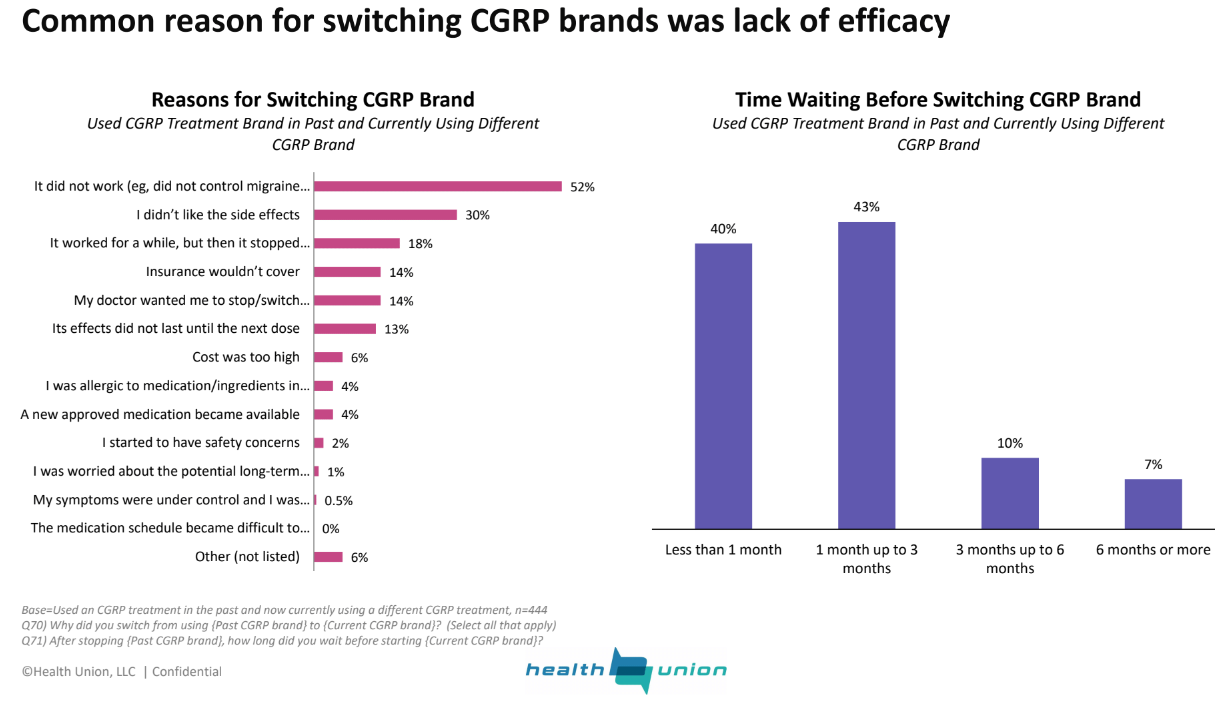Head-to-Head Migraine Study Ends in Tie
/By Pat Anson, PNN Editor
An unusual head-to-head competition between two migraine prevention drugs has ended in a virtual tie. There were no substantial differences in effectiveness between Emgality and Nurtec, according to preliminary results from a clinical trial released by Eli Lilly, the maker of Emgality.
Emgality and Nurtec both inhibit calcitonin gene-related peptides (CGRP), a protein that causes migraine pain, but their delivery systems are different. Emgality is injected once a month, while Nurtec is an oral medication taken every other day made by Biohaven Pharamceuticals, a subsidiary of Pfizer.
Eli Lilly launched the trial in late 2021, enrolling 575 participants in a Phase 4, double-blind, placebo-controlled study evaluating the efficacy and safety of Emgality (galcanezumab) and Nurtec (rimegepant) for 3 months in adults with episodic migraine.
The so-called CHALLENGE-MIG trial was a bold and somewhat risky move by Lilly, as it seeks to gain more market share in the highly competitive $2 billion U.S. migraine market.
In a statement, Lilly said Emgality did not meet the study's primary goal, which was statistical superiority to Nurtec in achieving at least a 50% reduction in monthly migraine headache days. The response rates of patients and safety profiles of both drugs were similar.
Lilly said Emgality was superior to Nurtec in some secondary outcomes, but didn’t disclose what they were. The company would only say that Emgality helped prevent migraines, as it has in previous studies.
"These results bolster our knowledge of Emgality's ability to work quickly and help patients improve their quality of life with less frequent dosing," Anne White, executive vice president of Eli Lilly, said in a press release. "Reducing the frequency of migraine headache days can help people experience more freedom from the burden of this debilitating neurological disease and get back to participating in the daily activities that matter most to them."
Final result from the CHALLENGE-MIG trial won’t be posted until later this year.
“Nurtec ODT is the first and only medication approved as both an acute treatment for migraine and a preventive treatment for episodic migraine in adults. It offers flexibility to patients in treating their migraines and is the leading prescribed oral CGRP receptor antagonist,” Pfizer said in a statement. “We are confident in the efficacy and tolerability profile of Nurtec ODT as demonstrated in the clinical trials and the well-established patient preference for oral agents over injectables.
First approved by the FDA in 2018, CGRP inhibitors are the biggest innovation in migraine treatment in decades. They are also expensive, whether taken by pill or injection.
The listed cash price for Emgality is $679 for a single injection or $8,148 annually; while 8 tablets of Nurtec cost $1,011 or about $23,000 a year. Costs to patients will vary, depending on insurance coverage, copay assistance programs and rebates.








